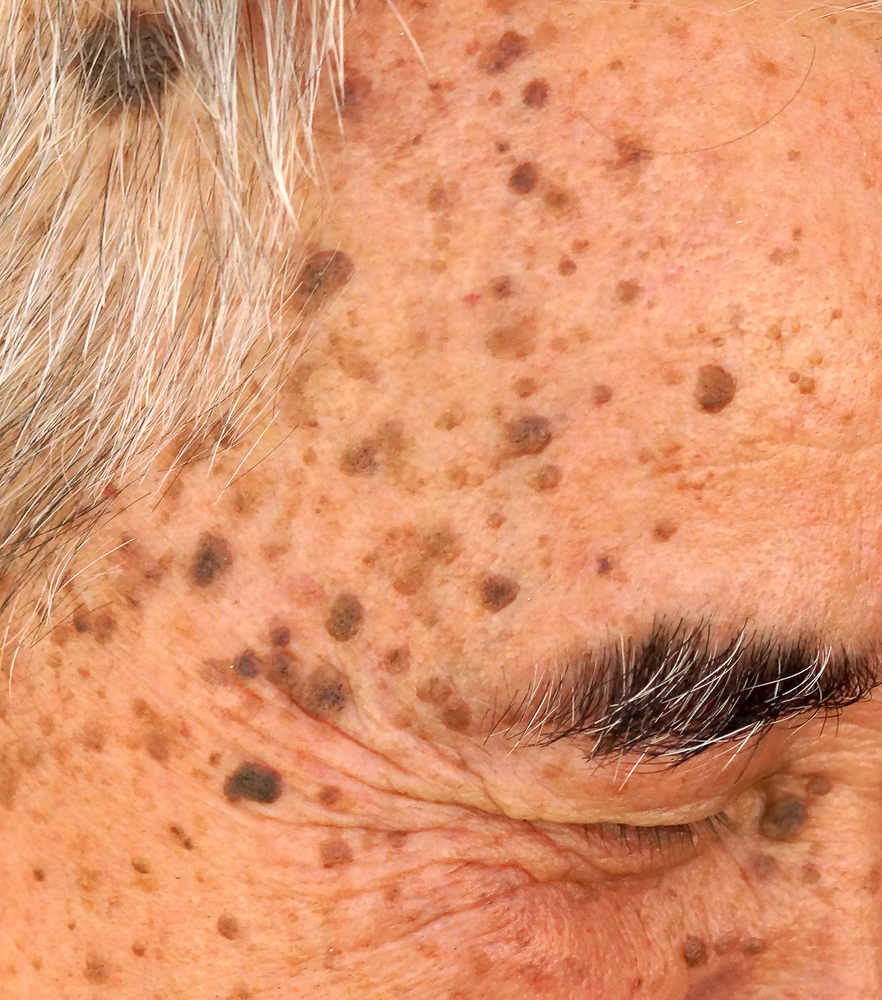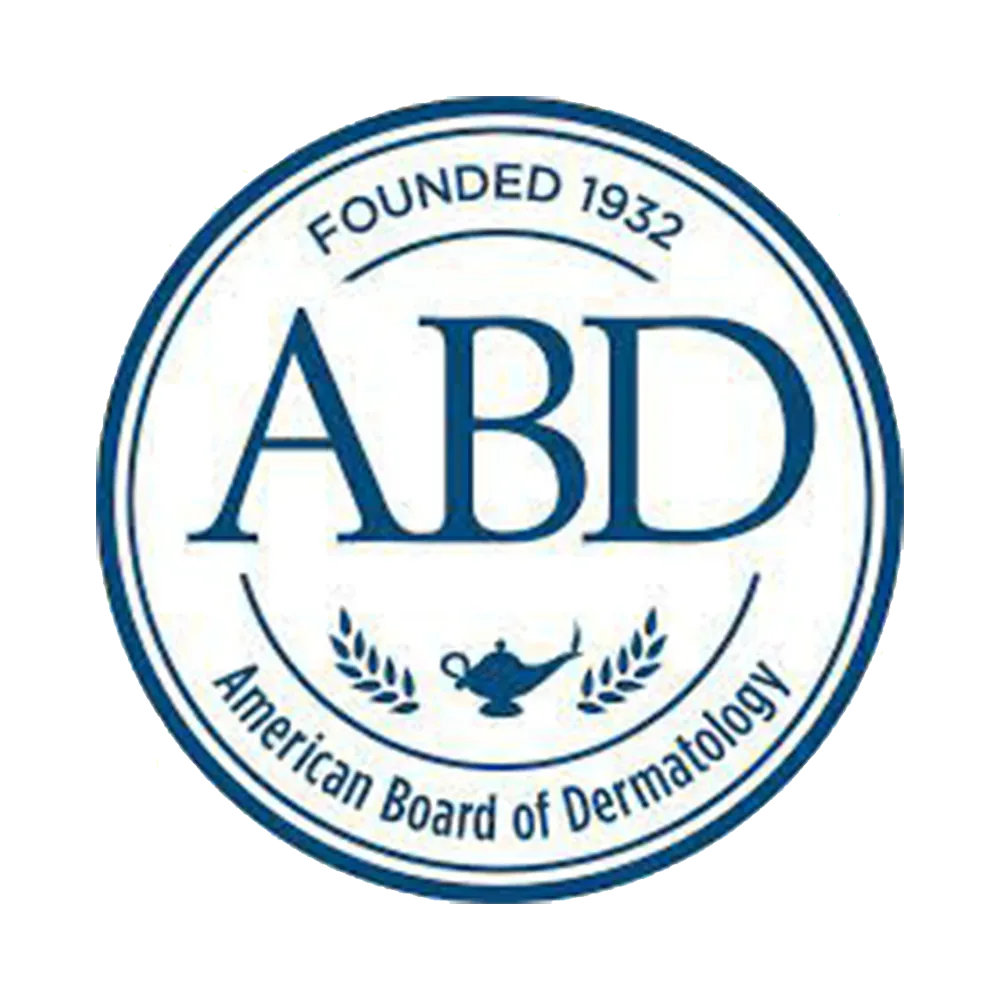Seborrheic Keratosis

Seborrheic Keratosis
Seborrheic keratosis is a common, benign skin condition characterized by wart-like growths, usually found in middle-aged and older adults. These growths vary in color, ranging from brown, black, or tan, and have a waxy, scaly surface. They are non-cancerous and considered a normal part of aging for many. Seborrheic keratosis presents as one or more non-painful growths on the skin, appearing waxy, scaly, and slightly elevated. These growths, which can range in color from light tan to black, are typically round or oval and can appear anywhere on the body except the palms and soles. They are usually asymptomatic but can get irritated by clothing or jewelry. The causes of seborrheic keratosis include genetic factors, aging, possibly prolonged sun exposure, and chronic skin irritation. There’s no evidence linking them to viruses or skin-to-skin contact. Diagnosis is typically based on the appearance of the growths and a dermatologist’s observation. In uncertain cases, a skin biopsy may be performed. Common myths about seborrheic keratosis include misconceptions that they indicate skin cancer, are contagious, result from poor hygiene, or are solely caused by sun exposure. They are benign, not contagious, unrelated to hygiene, and don’t always require removal. They are not precursors to cancer and can affect younger individuals as well. Treatments, usually for cosmetic reasons or discomfort, include cryotherapy, curettage, electrosurgery, laser therapy, and surgical removal. Home remedies are discouraged. Regular skin checks are advised for monitoring any changes.
Videos
Seborrheic Keratosis
While the exact causes of seborrheic keratosis are not fully understood, a combination of genetic factors and aging is believed to play a significant role. There is also some evidence suggesting that prolonged sun exposure might contribute to their development. These growths are more frequently observed in older adults, indicating a possible link with the natural aging process of the skin. The exact cause of seborrheic keratosis is not known, but it is believed to be related to genetic factors and sun exposure. The likelihood of developing these growths increases with age. There is no evidence to suggest that they are caused by viruses or spread through skin-to-skin contact.
- Genetic Factors: There is a strong genetic component associated with seborrheic keratosis. The condition often runs in families, suggesting that genetic predisposition plays a significant role in its development.
- Age: Age is a major factor. These growths are more common in middle-aged and older adults, suggesting that skin aging may contribute to their formation. They are relatively rare in younger individuals.
- Sun Exposure: Long-term sun exposure might play a role in the development of seborrheic keratoses, especially those that appear on the back and other sun-exposed areas of the body. However, they also frequently occur on areas of the body that are typically covered, indicating that sun exposure is not the sole cause.
- Skin Irritation: Chronic skin irritation or inflammation might lead to the development of seborrheic keratoses in some individuals. For example, they may appear in areas of repeated friction or abrasion.
- Hormonal Changes: Some evidence suggests that hormonal changes, particularly those related to estrogen, might be linked to the development of seborrheic keratoses, although this connection is not yet fully understood.
- Viral Infection: Initially, there was speculation that viral infections could be a contributing factor, particularly the human papillomavirus (HPV). However, recent research has largely discounted this theory, and most experts do not consider HPV or other viral infections as a significant cause of seborrheic keratosis.
It’s important to note that seborrheic keratosis is a benign condition and not contagious. They are not caused by poor hygiene, diet, or environmental toxins. If you notice any new, changing, or concerning skin lesions, it is always advisable to consult a dermatologist for a proper evaluation.
Several myths surround seborrheic keratosis, including the misconceptions that they are signs of skin cancer, are contagious, or result from poor hygiene. Seborrheic keratoses are benign and not related to any contagious pathogens. Their development is also unrelated to personal hygiene practices.
- Myth: It’s a Sign of Skin Cancer
– Reality: Seborrheic keratosis is a benign skin growth and is not cancerous. However, because of its appearance, it is often mistaken for skin cancer, particularly melanoma. It’s important to have any new or changing skin lesions evaluated by a dermatologist to rule out malignancy.
- Myth: It’s Contagious
– Reality: Seborrheic keratosis is not contagious and cannot be spread through skin-to-skin contact. Its development is primarily linked to genetic factors and aging, not to infectious agents.
- Myth: Caused by Poor Hygiene
– Reality: These growths are not related to personal hygiene. Their development is not influenced by how often you bathe, the type of soap you use, or other hygiene practices.
- Myth: Direct Result of Sun Exposure
– Reality: While sun exposure might play a role in the development of some seborrheic keratoses, many appear on areas of the skin that are usually covered. This suggests that sun exposure is not the sole cause.
- Myth: They Always Require Removal
– Reality: Seborrheic keratosis does not typically require removal unless it becomes bothersome due to itching, irritation, or cosmetic concerns. Removal is a personal choice and not a medical necessity.
- Myth: They Can Turn into Cancer
– Reality: Seborrheic keratoses do not evolve into skin cancer. However, because they can resemble certain types of skin cancer, it’s important for a dermatologist to examine any suspicious or new growths.
- Myth: Only Affects the Elderly
– Reality: While more common in older adults, younger individuals can also develop seborrheic keratosis. The likelihood increases with age, but it’s not exclusive to the elderly.
- Myth: It’s a Result of a Viral Infection
– Reality: Earlier theories suggested a link to viral infections like HPV, but current evidence does not support this. Seborrheic keratosis is not caused by viral infections.
Treatment for seborrheic keratosis is typically sought for cosmetic reasons or if the growths cause discomfort like itching. Various treatments are available, including cryotherapy (freezing off the growth), curettage (scraping off), electrosurgery (burning off), and laser therapy. Surgical removal might be considered for larger growths. It’s important to avoid home remedies or self-treatment, as these can lead to scarring and other complications. In most cases, treatment is elective since these growths are benign and not harmful.
- Observation: Since seborrheic keratosis is benign, a common approach is simply to monitor the growths. If they don’t cause any discomfort or cosmetic concerns, treatment may not be necessary.
- Cryotherapy: This is a common and quick method for removing smaller seborrheic keratoses. It involves applying liquid nitrogen to freeze the growth, which causes it to fall off within days to weeks. This method is best for thinner growths.
- Curettage: In this procedure, a doctor scrapes off the growth using a special instrument (curette). It may be combined with electrosurgery (see below) for thicker growths.
- Electrosurgery: This involves burning the growth using an electric current. It is often used alongside curettage for effective removal.
- Laser Therapy: Laser treatment can effectively remove seborrheic keratoses. A concentrated light beam is used to vaporize or break down the growths. This method is particularly useful for growths on the face and other sensitive areas.
- Topical Treatments: There are also topical treatments, such as creams containing hydrogen peroxide, which can be applied to the growths. These treatments may require consistent application over a period to be effective.
- Surgical Excision: In rare cases, particularly for very large growths, surgical removal might be recommended. This involves cutting out the growth, usually under local anesthesia, and may require stitches.
There is no known way to prevent seborrheic keratosis. However, general skin care, such as protecting the skin from excessive sun exposure and avoiding skin irritants, can be helpful. Regular skin checks are recommended to monitor any changes in the growths or the appearance of new ones. Remember, while seborrheic keratosis is a benign condition, it’s important to get a proper diagnosis, especially if you notice any changes in your skin growths. Regular skin checks are a good practice for overall skin health. The journey to a more confident you starts with one decision. That is the decision to get treated, why wait Book Online today? If you’re on the fence or have questions brewing, remember: We at SullivanDermatology are always here to help.







